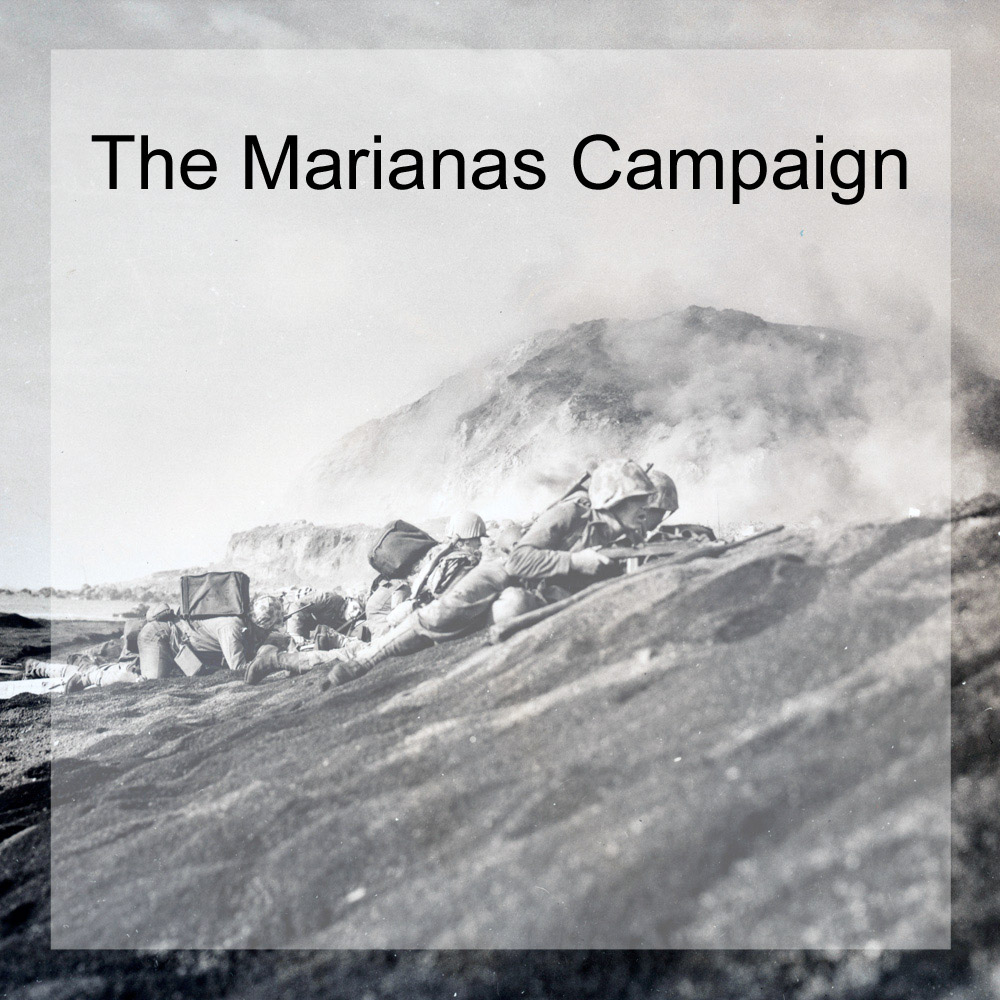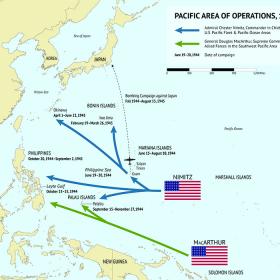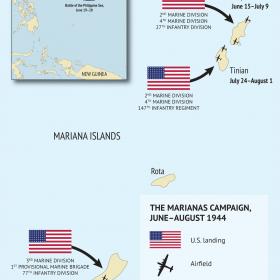The Marianas Campaign
As the first push in the greater effort to bring the war in Asia to an end, the campaign to take the Marianas Islands – Operation Forager – was aimed at neutralizing Japanese forces in the central Pacific to provide land-based air strips for the strategic bombing of Japan. The operation involved hundreds of thousands of American soldiers, sailors and Marines, spearheaded by the invasion of Saipan on June 15. Fighting a well-entrenched Japanese force at Saipan, Guam, and Tinian, American forces succeeded in taking the Marianas by August, enabling the 20th Air Force to begin moving B-29 bombers to Guam and Saipan. The islands’ capture was of vital strategic importance as it enabled bombers to be positioned within range of mainland Japan and facilitated the strategic bombing campaign which many believed was necessary to force Japan to surrender. The campaign was a costly victory however, as American forces suffered nearly 25,000 casualties, while Japanese forces lost more than 50,000; nearly the entire garrison of the islands.
Recognizing the vital importance that the islands location held, many believed – correctly – that American actions in the Marianas would bring the Japanese Navy to battle. The Battle of Philippine Sea took place between elements of the Imperial Japanese Navy’s Mobile Fleet and the American 5th fleet just days after Marines landed on Saipan. Launching nearly their entire carrier-based air fleet against the American fleet in the Marianas, the Japanese suffered heavy losses as superior American aviators and naval anti-aircraft crews shot down more than 300 planes on June 19th alone. The following day American fighters and bombers took aim at the Japanese fleet, sinking and damaging numerous tankers, carriers, and destroyers, while simultaneously shooting down another 150 Japanese aircraft. With the near total destruction of their carrier-based aircraft during the battle, Japan found it could no longer compete with American air forces in the Pacific.


